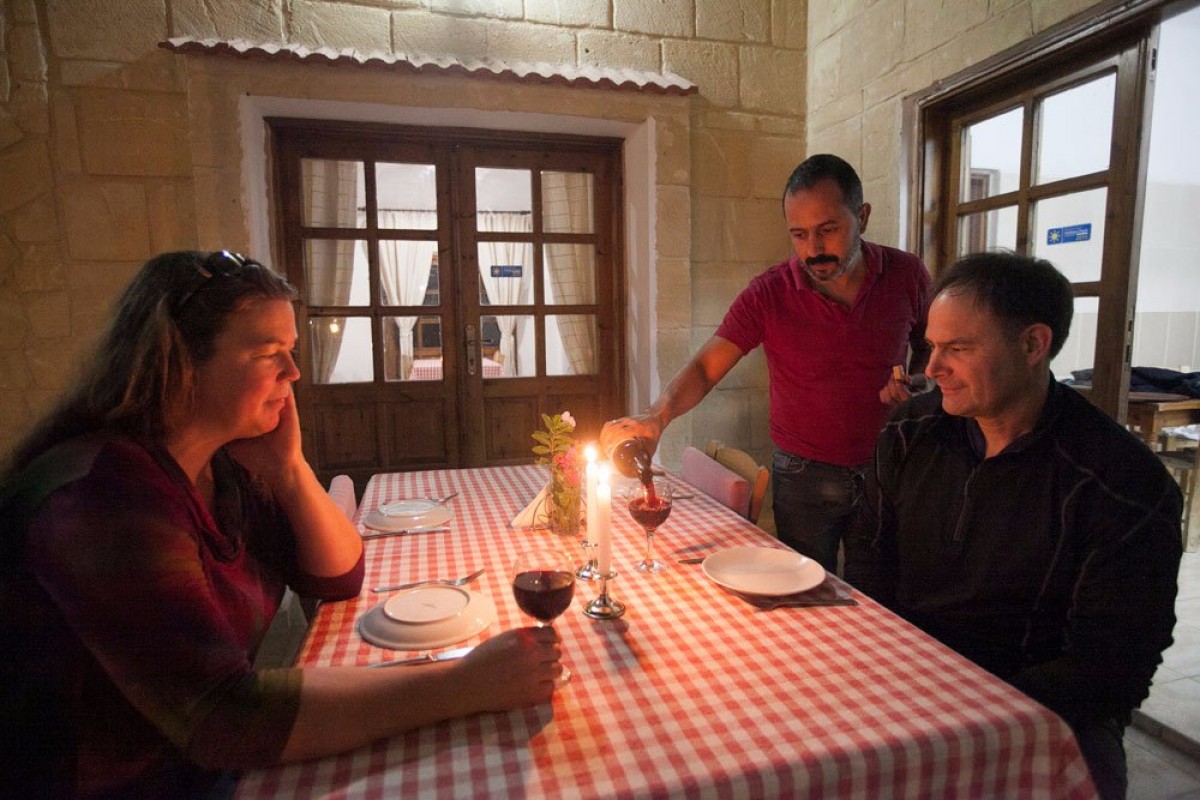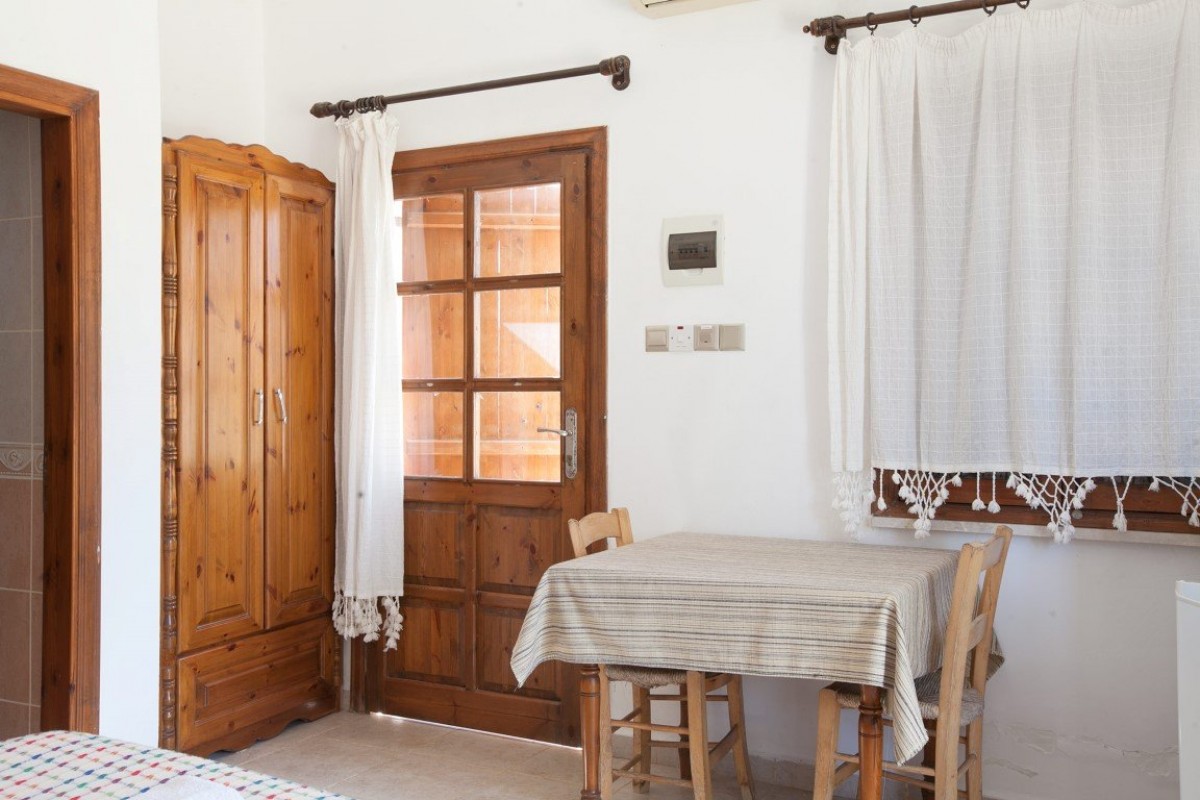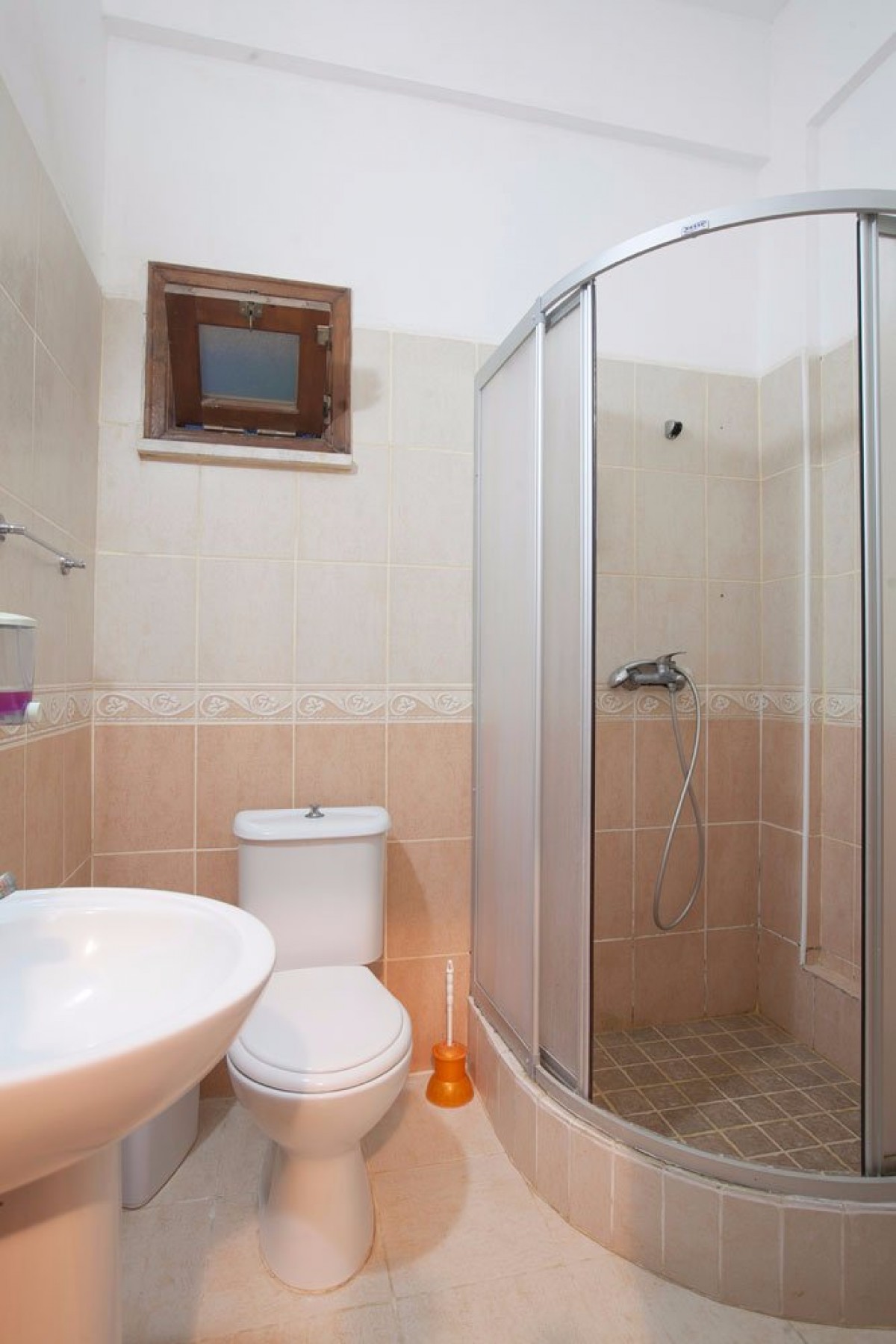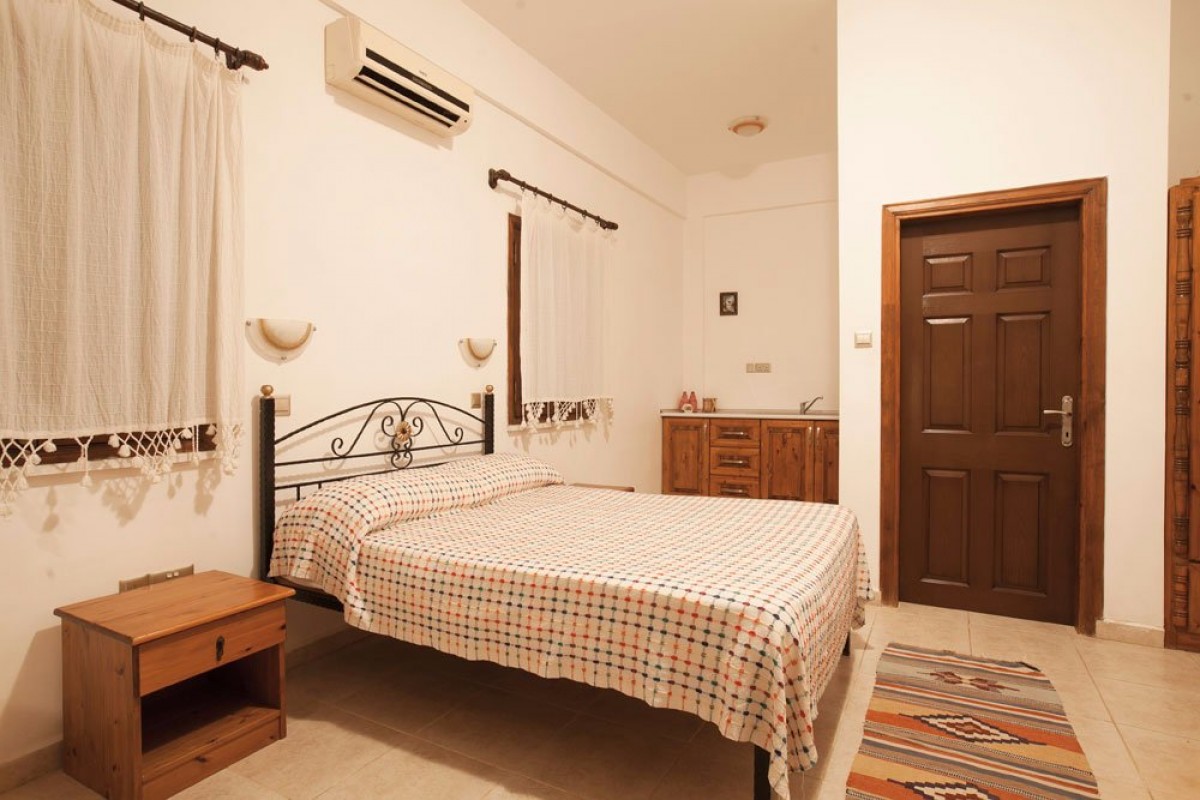General Information
Glaro Garden Hotel – A haven for Eco/Agro Tourism
Discover The Unspoiled Beauties of Nature & Historical Treasures Bestowed Upon
Dip Karpaz – The Peninsular of North Cyprus.
Established in sublime tranquil gardens within a unique setting, Glaro Garden Hotel is an articulately run family hotel with an ‘Eco lifestyle concept’ and is an experience not to be missed! The main hotel residency, out cottages, gardens and grounds designed to state-of-art elegance. Architecturally styled to classic Mediterranean traditions, the immaculate interiors offer the discerning guest bright tasteful decor with quality and comfort in mind ensuring to make your stay a pleasurable one.
Traditional Dip Karpaz is the Mediterranean of olde and Glaro Garden is in style with classic sand colored stonework and wooden framed windows and panelling make the attractively carved detached stone cottages sit amidst fabulous manicured greenery and botanical areas. Entrance via paved garden driveway leads to private parking for guests.
The creative talents of the owner/Director Mr. Murat Çebi, together with his lovely family, created a magical air to Glaro Garden Hotel with an ambiance to paint a picture of a thousand words to this storybook setting. New Cyprus Magazine congratulates Murat Çebi for bringing his dream to reality.
The exceptional high standards of Glaro Garden services ensure guest accommodate immaculately kept cottages whilst maintaining warm hospitable services yet retain the quality and traditional values of a ‘Mediterranean of Olde’! Here you can be sure to enjoy genuine ‘ Glaro hospitality ‘ together with excellent value for money.
Located in this divine setting, Glaro Garden Hotel is all about the best of Mother Nature, 10,000 years of Historical Treasures, Coastlands unspoiled Preservation Parks, Miles and Miles of Golden Sands combining bygone era with today’s modern life-style. The jewel of the Mediterranean is calling you!
One of the most beautiful beaches in the world, Altin Kumsal, known as Golden Beach, is located in the Karpaz National Park. 12 km of coastland with solitary beaches and crystal clear Mediterranean seashores stretching as far as the eye can see and the most pristine on the whole island.
Golden Beach, Dip Karpaz National Park protection area for wild donkeys and Sea turtles is a vital issue for global awareness and caring for our environment. Another important factor is maintaining the regions natural habitat and beauty. Our underlying feeling of a great historical and cultural prescience is vital and Glaro is the perfect setting for all these reasons and more. Glaro Garden Hotel wish to stress the importance of guests enjoying their stay within a family environment and welcome local and international guests to experience the uniqueness of this hotel where quality is guaranteed whereby leaving time is not ‘good-bye’ moreover ‘see you again soon’.
Patios and terraces overlook manicured lawns. Garden views of fabulous greenery and surroundings, manicured lawns, trees, palms with color splashes of flower beds are a vision of loveliness and sure to soothe the soul.
Manicured Gardens and grounds, cottages look out onto a fantastic designed green areas incorporating lawns, palm trees, flower rookeries, hedging and flower beds make this garden environment a ‘wow’.
New Cyprus Magazine, asked the Director of Glaro Gardens, Mr Murat Çebi, what inspired him to create such a beautiful storybook setting and the importance of hosting an Eco style hotel.
He begins, “my family and I had the vision and aim to introduce the natural style of part Olde Mediterranean and part new within an Eco environment. Supplying Cyprus’ regional culture in a traditional formulation of hotel hospitality’. We envisioned and created the formulation of Glaro Gardens Hotel, objectively introducing Eco/Agro Turkish Cypriot tourism and cuisine”.
Murat Çebi explains to New Cyprus Magazine, why he chose this theme for his concept hotel’.
“As a family, we were raised with the importance of agriculture, Eco green thinking and taking care of our earth, therefore from a very young age my mindset of ‘green friendly’ and environmental issues is a subject close to my heart. My dream, has always been to one day create my own family run Eco / Agro style of hotel. I came to Cypurs many years ago and fell in love with the mystical historical treasures and cultural living in the far eastern corner of the Karpaz Peninsula and settled here in Northern Cyprus. My education completed as a practicing accountant I worked here on the island, this gave me the infrastructure for the fundamentals and logistics to put together the Glaro Garden Hotel project whilst still working. Enthusiastically, I completed and opened the doors to Glaro Garden Hotel some four years ago”.
He continues. “My efforts towards Eco tourism and an Eco friendly environment are part of our hotel policy portfolio. Guests are served naturally, we use home grown produce and ingredients produced naturally fresh from our own vegetable garden, local farms or marketplaces. We use village products at maximum level in our kitchen and specialize in serving regional dishes. Our hotel only works with freshest locally produced ingredients. The environment is an important part of tourism bring the beauties such as Karpaz National Park. Flora and Fauna with the splendor of Nature to bring a healthy piece of paradise to your next vacation”.
Accommodation
6 Detached Stone Cottages
One Cottage self-catering family double suite
Rooms
Large Patios
Double and Single Beds
Refrigerator
T.V.
Hairdryer
Wi-Fi free
Table and Chairs
Room Service
About Karpaz
The main source of incomes for local Greek Cypriot and Turkish Cypriot co-habitations
come with the natural source of the land, therefore regional production of livestock and agriculture are strong, together with a somewhat small yet growing sector of Eco hotel tourism. Within the most humid areas of Dipkarpaz grow orchards of carob and olive trees. Carob molasses (pekmez) are well-known. Where Mosques and Churches stand side by side! Greek and Turkish Coffee shops in the village square are quite contentedly currently centered still facing each.
Flora and Fauna
- Cinematic views of spectacular unspoiled Mediterranean coastlands
- Miles and miles of sandy beaches
- Wild donkeys wandering freely
- Karpaz National Park Preservation Area
- Caretta Turtle Beach
- Nesting grounds for Caretta Caretta and Loggerhead turtles
- The temperature of the sea water in the months of November is 25℃, and in December – 20℃. Swimming is possible all year long.
Historical Landmarks & Treasures
Ayios Synesios Church:
One of the few Christian Churches operating in North Cyprus is the church dedicated to saint Synesios located on the central square at the Dipkarpaz Village. St. Synesios church where the eastern side of the Byzantine era refers to 12th century. In the 13th century the western part was enlarged and covered and an octagonal dome was added. This is a fine example of the typical Cypriot mixed style combining features of typical Lusignan Gothic style with Orthodox Byzantine style. It is currently one of the few still operating in North Cyprus.
St. Philon Church:
Known as one of the oldest dioceses in Cyprus, Karpasia City, St. Philon monastery, surrounded by a wall, is amongst the most ancient buildings where there is the church of St. Philon, named after the first bishop appointed to Cyprus the island dating back to the year of 382-401A.D.Of Roman style with mosaics of yellow, red, black and white marble, one of the prime examples of that period.
The Ancient Town of Karpasia:
To the north of Dipkarpaz village lie the ruins of the ancient city of Karpasia which lie on the coast of Ayfilon. Built in the 12th century. Believed to be founded by the mythological hero Pygmalion founded the city. In mythology, Pygmalion, who hates women creates a statue of ivory depicting the woman of his dreams, a sculpture so beautiful that Aphrodite, the Goddess of Love out of jealousy makes Pygmalion fall in love with the ivory statue. Lovelorn begs Aphrodite to revive the statue and so she did! Lively Galatea is a woman of rare and unique beauty with milky white skin. Pygmalion married Galatea, and they had a sin, believed to be the name of the Paphos City originates from. Many of the ancient city sights are still underground. Surfaced today we are fortunate to see the Church of St. Philon, the Ancient Harbor of Karpasia and Tsambres graves.
The Ancient Port of Karpasia:
The ancient port of Karpasia is situated to the farthest point west of the ancient city of Karpasia, protected by two break-waters, Tsambres’ stones where carved in old ancient times still can be found at this bygone cemetery which in later times was used as a quarry.
Ancient city of Aphendrika (Urania):
5 miles east of the main city of Karpasia lies the ancient city of Aphrendika (Urania) extending south from the ruins of Agridia to the sea. According to historical data Richard Pococke, cartographer, visited the city ruins in 1738. He states the ancient city was known as “Aphronisy”. The Ancient City of Karpasia and this city served as a linking point between Salamis and Anatolia. Among the city’s ruins there are underground chapels and three churches.a castle on the hilltop, the Acropolis, the ancient city port in the village of Liminas, stones and columns remain as ruins. 300 meters to the northeast according to the map lies the church of Panagia Hrisiotissa, which remained underground and another church lies the named Prophitis Elias, and 300 meters south-west of the Acropolis hilltop can be found the ruins of another church. In the 3rd century BC, the city was one of the six most important cities of Cyprus. A fortress from the Ancient Greece period, tombs of the Hellinistic, period and ruins of the ancient harbor, a mile to the north.
Church of Panagia Chrysiotissa:
Known as the Church of Our Lady, church lies in the northern east part of the city still stands today. Early Christian period (5-6th century AD) a basilica was built and show similarity with the churches of the Holy Trinity (Agios Trias) in the village of and St. Philon in Karpasia.
St. George’s Church
A small church in the north-west part of the city square of the ancient Aphrendika. Standing as one of the oldest churches in Cyprus which survived to these days.
Church of Panagia Asomatos:
This triapsidal church is a large building resembling the church Panagia Hrisiotissa, the plan and style of evenly carved rocks located in the southern part of the center of Aphrendika. Located in the southern part of the centre of Aphendrika.
Acropolis Hill:
The church ruins lie to the south-west at the top of the low steep cliffs spreading to the north there are traces of fortress (citadel) palace. Carved in the rocks and consist of five buildings. One of the oldest parts of the city. Similar carved into the Rock at Kumbet Acropolis in Phyrgia and in the city of Migas and Gordion suggest that the population of those areas migrated to Aphendrika.
Port Limianos:
Port Liminas, formed in shape as a horseshoe, is located just 1 km to the north-west of the city, and privileged shelter to many visitors throughout it’s centuries of history. In 1888, Hoggarts, known to have visited the port in 1888 wrote in the waterfront of the estuary, he saw four white stone pillars to which he moored and tied ships. Two feet wide and three feet wide today. Traces of cut rocks suggest it was once used as a quarry.
Saint Apostolos Andreas Monastery:
This monastery is one of the world’s most important places of Orthodox worship. Located at the farthest eastern point of the peninsula, known as Apostolos Andreas or Cape Zafer.
The monastery, located 20 km from the village of Dipkarpaz is dedicated and named ‘in honor of the “the creator of miracles”, “ruler of winds”, “protector of traveller’s”, Apostle Andrew. According to the legend this is where Apostle Andrew came down to the shores of of Cyprus during s sea voyage, and discovered the miraculous water by hitting the ground with his staff. Thereafter, it is believed, water flowing out from the church is a source of holy healing water. The room with drinking water was once used as a chapel.additionally, it is believed the water flowing under the monastery is a source of treating many diseased healing allergic, various fungi, as well as warts and skin disorders. Magnificent architecture and chandeliers church icons enhance the air of mysticism. Not only Orthodox, or believers of Apostolos Andrew, but anyone who believes in the power of healing can go and light a candle at the entrance and make a wish.
Karpasia National Park:
All the pristine beauties of the island are collectively known as being at The Karpasia National Park. Located in the tip,of the Karpaz Peninsula. The boundaries of the National Park stretch from the Cape Zafer and Klides islands in the east and to the village of Dipkarpaz. To the west lie Ronnas sand dunes and ancient city of Karpasia. Points of entry to the park are located to the northern and southern parts of the village of Dipkarpaz. Resident and tourists alike both use these roads.
Kastros Neolithic Settlement Site Zafer Burnu (also known as Cape Andreas):
Kastros, at the most easterly tip of the Karpaz peninsula.
Acropolis:
This particular region was chosen as an extremely important biologically diverse area, due to species living here as well as being historically and archeologically rich. More particularly, the peninsula coast is a nesting site and home for the sea turtles which became a vital criteria when choosing this part of the island as a National Preservation Park. Numerous quantities of Green (Chelonia Mydas) and Loggerhead (Caretta Caretta) sea turtles disperse on the beaches all over this region. Seals are the real masters of the sea when it comes to the peninsula and reproduce in coastal areas. Gulls, a major colony of nesting gulls Audouin (Larus Audouinii) , are another major species, when it comes to nesting in this region.
Plants:
Rare endemic species and subspecies of Wild flowers and plants
Three quarters of 1410 species and subspecies of plants to be found in North Cyprus thrive and grow in the Karpaz Peninsula. Amazingly half of those grow in the National Park. 24 out of 47 endemic species and approximately 100 species of rare plants grow in the National Park.
Birds:
147 out of Cyprus’ 215 birds species live in Karpaz area, 12 out of 16 species of reptiles; 2 of the 5 species of mammals; all protected by the state live in this region.
Cypriot Donkeys:
Residents to the National Park and the symbol of Cyprus, Cypriot donkeys. Wild donkeys continue to multiply in the pristine territories of the Karpaz Peninsular.
Important Information:
Distance from Dipkarpaz to Nicosia (Lefkoşa) is 131 km, to Kyrenia (Girne) – 140 km, to Famagusta – 81km, 61km to Iskele.
Located at Dipkarpaz Village
Local North Cyprus Information
Bank, ATM, Health Centre (2 mins)
Director: Murat ÇEBI
Distance & Position
Ercan Airport 97 kilometers
Position 35° 33.5’N. 34° 13.6’E
The Karpaz peninsular is a stunning, pristine cruising area located in Yeni Erenkoy on the Karpaz peninsula, making it a very convenient port of call for those cruising the Eastern Mediterranean, however it is quite an isolated spot.

































